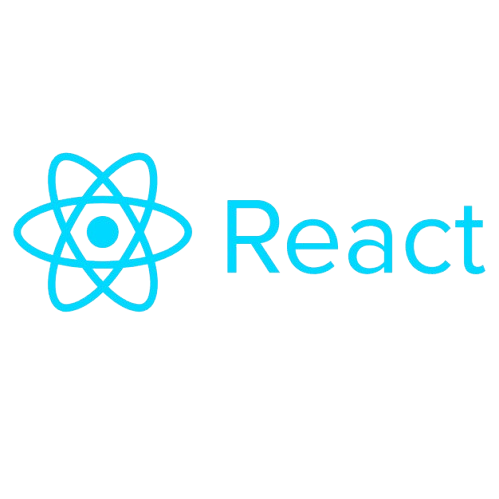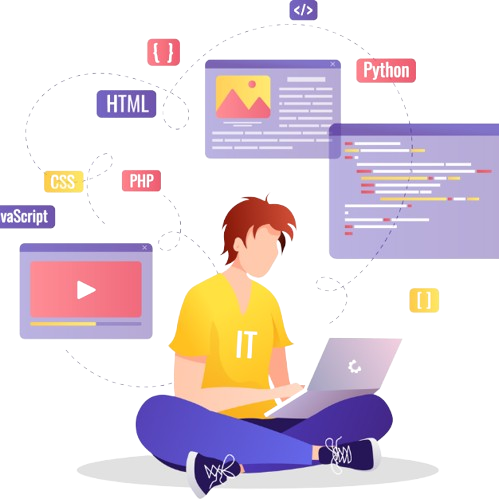In the world of mobile app development, two popular frameworks dominate the landscape: React Native and Flutter. Both frameworks have gained significant traction in recent years and are widely used by React JS development companies for developing react mobile apps and cross-platform applications. But which one should you choose for your next project?
As a React JS developer, or as someone exploring React development services, you’re probably wondering which framework is the best fit for your needs. Will React Native give you the flexibility and performance you need, or will Flutter provide better results for building smooth, beautiful, and highly performant apps?
In this blog post, we will explore both frameworks in depth, compare their strengths and weaknesses, and help you decide which framework is the right choice for your React app development needs.
Let’s dive in!
Introduction to React Native and Flutter
Before diving into the comparison, let’s define what React Native and Flutter are and understand their key features.
What is React Native?
React Native is an open-source framework developed by Facebook that allows you to build cross-platform mobile apps using JavaScript and React. React Native allows you to write code once and run it on both iOS and Android, making it an efficient solution for mobile app development.
What sets React Native apart is its use of native components. Instead of rendering web views, React Native compiles JavaScript into native code, providing a smooth user experience and performance on mobile devices.
Key Features of React Native:
- Native Performance: React Native bridges JavaScript and native components, ensuring optimal performance for mobile applications.
- Reusable Code: You can share a significant amount of code between iOS and Android apps, reducing development time and costs.
- Hot Reloading: React Native allows developers to make changes to the code and instantly see the results without recompiling the app.
- Large Community and Ecosystem: React Native has a massive community and a rich ecosystem of libraries, tools, and resources.
What is Flutter?

Flutter, developed by Google, is another open-source framework for building cross-platform mobile apps. Unlike React Native, which uses JavaScript, Flutter uses Dart, a programming language created by Google. Flutter allows you to write code once and deploy it across iOS, Android, and even web applications.
The key feature of Flutter is its widget-based architecture. It uses a single codebase for UI and logic, enabling full control over the look and feel of the app. Unlike React Native, which relies on native components, Flutter renders its own UI components using its rendering engine, which allows for consistent design and performance across platforms.
Key Features of Flutter:
- Customizable UI: Flutter offers rich, customizable widgets that give developers more control over the app’s appearance and animations.
- Hot Reload: Similar to React Native, Flutter allows you to see changes in real-time without rebuilding the app.
- Single Codebase: With Flutter, you can develop for iOS, Android, and even the web using the same codebase.
Performance: Since Flutter uses a compiled programming language (Dart), it is known for its fast performance and smooth animations
1. Programming Language
React Native and JavaScript

React Native uses JavaScript, one of the most popular programming languages in the world. JavaScript is widely used for web development, and many developers are already familiar with it. This makes React Native an attractive option for teams with a strong background in React web development.
Advantages of JavaScript for React Native:
- Familiarity: If you are already experienced with JavaScript and React, transitioning to React Native will be smoother.
- Cross-Platform Development: JavaScript’s ecosystem is vast, and React Native leverages many existing JavaScript libraries, reducing the need to write platform-specific code.
- Large Developer Pool: JavaScript has a large number of developers, so finding talent for React Native development is easier.
Disadvantages of JavaScript for React Native:
- Performance: JavaScript can sometimes result in less efficient performance compared to languages like Dart, especially when it comes to heavy animations and complex computations.
- Limited Native Features: While React Native provides bridges to native modules, some advanced native features may require more effort to implement.
Build Fast, Scalable ReactJS Apps Today!
Partner with SDLC CORP for top-notch ReactJS development solutions.

Flutter and Dart
Flutter uses Dart, a relatively lesser-known programming language developed by Google. Dart is specifically designed for building mobile apps and provides features that enhance app performance and UI rendering.
Advantages of Dart for Flutter:
- Optimized for Performance: Dart is compiled directly into native code, which can provide better performance, particularly for animations and transitions.
- Structured Language: Dart offers a more structured and object-oriented approach compared to JavaScript, which some developers find easier to work with for large projects.
- Single Language for App Logic and UI: With Flutter, Dart is used for both app logic and UI design, leading to a more consistent development experience.
Disadvantages of Dart for Flutter:
- Learning Curve: Dart is not as widely known as JavaScript, meaning your team might need to spend some time learning the language.
- Smaller Developer Community: Since Dart is not as popular as JavaScript, the community is smaller, and there are fewer resources and libraries compared to React Native.
2. UI and Performance

React Native UI
React Native’s user interface relies on native components, meaning it renders a native UI on each platform (iOS and Android). It uses a bridge to communicate between JavaScript and the native code, which allows developers to use native widgets and components.
React Native UI Advantages:
- Native Look and Feel: Since React Native uses native components, the app’s UI feels like a native application, offering a seamless user experience.
- Customization: While the native components provide a good foundation, developers can also customize them to achieve the desired look and feel.
React Native UI Disadvantages:
- Inconsistent UI across Platforms: Since React Native relies on platform-specific components, the app’s UI can sometimes differ slightly between iOS and Android.
- Limited Control over UI: Some developers feel that React Native offers less control over UI details compared to Flutter’s widget-based approach.
Flutter UI
Flutter’s UI is built using widgets, which are customizable and highly flexible. Flutter offers a wide range of pre-built widgets, and developers can create complex UIs using these components. Since Flutter uses its own rendering engine, it guarantees that the UI will look the same across all platforms.
Flutter UI Advantages:
- Consistent UI: Since Flutter doesn’t rely on native components, the UI is consistent across iOS, Android, and the web.
- Highly Customizable: Flutter offers a vast library of widgets, and you can create custom widgets for specific needs.
- Rich Animations: Flutter provides powerful animation libraries, making it easier to create smooth and responsive animations.
Flutter UI Disadvantages:
- Not Native: Since Flutter doesn’t use native components, it may not feel entirely “native” to some users, especially for highly complex or platform-specific features.
- Larger App Size: Due to the custom widgets and rendering engine, Flutter apps tend to be larger in size compared to React Native apps.
3. Development Speed and Hot Reload
React Native Development Speed
React Native offers hot reloading, which allows developers to see changes instantly without recompiling the app. This feature speeds up the development process significantly and improves the development experience.
React Native Speed Advantages:
- Quick Iteration: You can make changes to the code and see them reflected immediately, speeding up the development process.
- Reusability of Code: React Native allows you to reuse much of the code for both iOS and Android, which reduces development time.
React Native Speed Disadvantages:
- Need for Native Modules: Some complex features might require custom native modules, which could slow down development.
Launch High-Performance ReactJS Applications!
Work with SDLC CORP to transform your ideas into stunning digital products.

Flutter Development Speed
Flutter also supports hot reload, making it easier for developers to see changes without rebuilding the app. This feature boosts productivity and makes experimenting with UI design fast and efficient.
Flutter Speed Advantages:
- Quick Updates: Like React Native, Flutter allows for rapid development with real-time updates and minimal recompiling.
- Unified Codebase: With Flutter, the same codebase works for iOS, Android, and web apps, meaning you don’t have to spend time maintaining separate codebases.
Flutter Speed Disadvantages:
Learning Curve: The Dart language and the Flutter framework require time to learn, especially if you’re used to JavaScript.
4. Community and Ecosystem
React Native Community
React Native has a huge, well-established community due to its popularity. The React JS development company ecosystem is vast, with a plethora of libraries, tools, and resources available to support React Native development.
React Native Community Advantages:
- Large Ecosystem: There are many third-party libraries, pre-built components, and plugins available for React Native.
- Active Community Support: With a large community of developers, you can easily find solutions to common issues and get help when needed.
React Native Community Disadvantages:
- Limited Libraries for Native Features: Some native features might not be fully supported or require custom native code.
Flutter Community
While the Flutter community is not as large as React Native’s, it is growing rapidly. Since Google backs Flutter, developers are continually improving the ecosystem and adding new features to make it more robust.
Flutter Community Advantages:
- Google’s Backing: With Google behind it, Flutter has strong support and is expected to grow in popularity and features.
- Active Development: The Flutter ecosystem is growing fast, and there are new libraries and tools being developed constantly.
Flutter Community Disadvantages:
- Smaller Ecosystem: The Flutter ecosystem is still smaller compared to React Native, and some native modules may not be available yet.
5. When to Choose React Native or Flutter
Choose React Native if:
- You are already familiar with React JS development and JavaScript.
- You need a framework with a larger community and ecosystem.
- You want to reuse code across iOS and Android with minimal customization.
- You need native components for a truly “native” look and feel.
Choose Flutter if:
- You need high-performance apps with smooth animations and a customizable UI.
- You prefer a unified codebase that works across platforms, including mobile and web.
- You want full control over UI components and design.
You are okay with learning Dart and working in a less established ecosystem.
Accelerate Your Business with ReactJS!
Choose SDLC CORP for dynamic, responsive, and scalable ReactJS development.

Conclusion
Both React Native and Flutter are excellent frameworks for developing mobile apps, but the best choice depends on your project requirements and the tools your team is most comfortable with. If you’re looking for a framework that leverages your existing React web development skills, React Native is a solid choice. On the other hand, if you want a framework that provides full control over the UI and performance, and you’re ready to embrace Dart, Flutter could be the perfect fit for your project.
As a React JS development company or a React mobile app developer, it’s essential to carefully weigh the pros and cons of each framework. Whether you’re building a React mobile app or a React website development project, both frameworks offer distinct advantages that can help you achieve your goals. Happy coding!
SDLC CORP ReactJS Development Services Overview
SDLC CORP offers top-notch React website development services to create dynamic, scalable, and user-friendly web applications. Our expert team leverages ReactJS to deliver high-performance solutions tailored to meet your business needs, ensuring a seamless user experience and robust functionality. Partner with us to build innovative, modern websites that drive growth and engagement.



